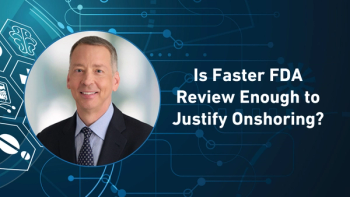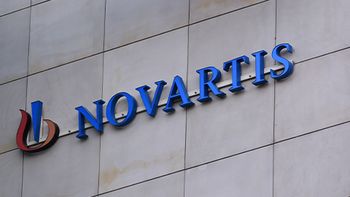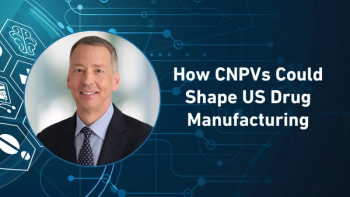
- Pharmaceutical Commerce - September/October 2014
Specialty pharmaceuticals demand integrated patient and prescriber approaches
True 'market access' should involve coordinated approaches to patients and their healthcare providers
Fig. 1. Integrated Touch Point Timeline for Patient Access to Medication.
All signs point to a lucrative future for specialty drugs and biologics. The decline of primary drug blockbusters and the lack of replacements in the pipeline have shifted industry focus to specialty portfolios. Although specialty medications reach smaller markets, their significantly higher pricing and quicker investment return from getting to market faster due to fewer clinical trial requirements, make them very attractive. As a result of this shift, Express Scripts, a leading pharmacy benefits manager (PBM), forecasts growth in their specialty drug and biologic sales to reach as high as 40% of their total sales this year, reaching 67% in 2015. It expects cancer drugs to grow 77.4% by 2016 and indicates other major growth categories include those treating diabetes, multiple sclerosis and inflammatory conditions such as rheumatoid arthritis. [1] This growth translates into significant dollars, with IMS projecting global revenues to reach $236 billion for the specialty medicine market in 2017. [2]
With such significant revenues at play, optimizing patient access to these new medicines is critical to success. Integrating market-access and patient-support programs certainly provides the concerted effort that will lead to such optimization, however, achieving such integration calls for a services provider who can deliver it. It is possible—and it happens all the time—that pharma companies themselves coordinate the delivery of these services, from themselves and their own sales forces, or with service providers that deliver one or more of these services. There are a few companies—our own, Ashfield Commercial & Medical Services, is one—that can deliver all, or most of them. Whether to use one integrated provider, or several that can be aggregated to deliver the full range of services, is a determination to be made by a pharma company’s management.
To say that optimizing patient access is a difficult task at best is certainly an understatement in today’s healthcare delivery marketplace. Once a life science company decides its specialty drug or biologic is ready to commercialize, the hard part—ensuring that the medicine actually reaches the intended patient population—begins. This journey from clinical trial to patient’s home is an arduous one as illustrated in Fig. 1. It requires careful planning with diligent execution to ensure integration of outreach efforts by market access, sales and nurse educator teams, as well as call centers and digital outreach to a multitude of touch points including commercial and government payers on local and regional levels; the various groups of healthcare providers—including physician offices, Integrated Delivery Networks (IDNs), Accountable Care Organization (ACOs), hospitals, various other influencers on healthcare delivery; and hub services and specialty pharmacies.
Making sure that all these elements are integrated into the medicine’s overall marketing plan is not only paramount to a successful launch and take-up, but also saves significant resources throughout the medicine’s lifespan. With IMS reporting that large pharmaceutical manufacturers need to find cost reductions totaling $35 billion through 2017 in order to maintain current research levels and operating margins [3], the impetus to find savings through integration of patient access outreach efforts has never been greater.
Gaining market access
As shown in the patient access timeline, the first step to reaching the patient with a new medication is to obtain position on the targeted payers’ formularies. The difficulty of this endeavor is rapidly escalating. The state of the overall economy and pressures to find affordable health care are primary drivers in the level of difficulty, along with such payer specific factors as:
- Payer plan and PBM consolidation resulting in “power” brokers dictating contract terms
- Copay assistance pushback
- The magnitude and frequency of price increases
- Open government payer networks moving specialty pharmacies into Medicare Part D prescription drug plans.
Today’s life science company certainly faces a much different market access landscape than what was available before 2010 as shown in Fig. 1. New products very rarely land above Tier 3 on the reimbursement schedule, where copays are normally set at $70 and more, and are often accompanied by step edits or prior authorization. Reaching an attractive, affordable reimbursement schedule for the patient takes time and well-designed and executed strategies for influencing payer perceptions.
To be successful in influencing payer perceptions and subsequent actions, it is critical to understand those perceptions and likely actions prior to Phase II clinical trials. This means drawing upon previous experience in the medicine category or working with market access providers who offer such experience. Payers want to be assured that the medicine will help patients meet treatment goals at the lowest possible cost. They need to understand such items as how patients are able to adhere to the medicine’s protocol, how patient outcomes are impacted, and how the medicine treats the disease severity while eliminating costly system resources like hospital stays, to name just a few of the measures on which a medicine is evaluated. Developing messaging to this payer audience addressing these key issues is critical.
To hit the ground running, the market access team must be armed with appropriate studies and understand where the medication should fit in reimbursement schedules. Reimbursement strategies vary greatly across regional and local plans. The types of public and private coverage in the region as well as patient demographics come in to play here. These factors are further impacted by employers now offering more options in health benefit plans while increasing the payment burden to the employee, often resulting in increased out-of-pocket costs. The market access team must wrestle with questions such as:
- What will it take to get the medication on formulary and then pull it through?
- Who are the other healthcare influencers in the region?
- What degree of influence do IDNs, ACOs, health information exchanges, specialty pharmacies, and sometimes patients themselves play in the mix?
Therefore, in order to be successful in obtaining the best formulary position, one must develop a payer strategy within the marketing plan that incorporates payer research by individual markets. The strategy should incorporate realistic resource allocations based on market optimization. For instance, if research indicates that the payer environment in Boston is more amenable to a certain therapeutic category than the environment in Philadelphia, initial outreach of market access teams would be slanted toward Boston, particularly in resource-strapped organizations. Determining the quickest route to a product launch at a negotiated best price, supported by the appropriate pull-through, is certainly key and should drive the market access plan.
Account managers implementing the plan should be experienced with good contract negotiation skills along with long-standing relationships with key decisionmakers in the commercial and state/federal markets. The goal is to balance the economics of broader patient access with preserving the financial margins of the manufacturer.
It is also important that the plan be realistic, with emphasis on establishing a revenue foundation based on Tier 3 reimbursement for broad access at launch through the life cycle of the product. For example, when a medicine is in a competitive class such as diabetes, payers could be looking for a discount or a rebate, substantially reducing the revenue stream. This is particularly true of pills rather than biologics. The market access team will need to have a plan for meeting these demands based on size and rate of anticipated market capture. Again, statistical analysis of key Metropolitan Statistical Areas (MSAs) will assist in developing such strategies.
Beyond the formulary
Once the medicine has achieved or is approaching formulary status, two parallel outreach efforts ensue. The first would be contact with the prescribers and influencers in the market; the second would be the distribution channel, namely specialty pharmacies and hub service organizations.
Here is where an integrated plan between internal or outsourced market access and field sales teams is truly advantageous. In such integration, as market access teams start to finalize position on formularies, they can alert the sales team, who can then use a call center or field sales rep to contact physicians alerting them that a new medicine is on the horizon, and helping them identify appropriate patients for that medication within each practice. This preemptive contact primes the pump for a formal detail on the medication to initiate script writing when it does reach formulary.
Market access can also coordinate with brand marketing, who may start direct-to-consumer (DTC) advertising to generate brand awareness and patient inquiries. A well-integrated plan alerts sales representatives to these DTC activities within their territory, so they can educate the physician on how to respond to this marketing push, making sure the right patient population is given access to the medication. By working brand advertising and sales in conjunction with market access, these efforts can also be allocated on a rolling basis, covering individual markets as the medicine becomes unshackled in its respective territories. This goes a long way in keeping sales expenditures efficient and effective.
Sales representatives need to be armed with information on these formulary positions and reimbursement issues when dealing with the physician practices. However, in the instances when the medication is beyond the patient’s ability to pay, most physicians are unable to assist the patient in finding proper reimbursement. Specialty pharmacies and hub service companies can step in at this point to help patients navigate their way to access. They assist the patient with finding grants, coupons or co-insurance plans to make the medication affordable.
To ensure the best possible outcome, the life sciences organization needs to include a call plan to back-end hub services and specialty pharmacies in its overall marketing and sales strategy. This will make sure all touch points know what needs to be done to make sure the medication reaches its intended user.
In a plan that integrates outreach throughout the commercialization process, the market access team can be tapped to cover much of the specialty pharmacy channel, since many payers, both large and small, now own specialty pharmacies. With IDNs, health systems and some physician practices also entering the specialty pharmacy business, integrating outreach with the field sales team covering these targets becomes an important tactic in executing the plan. Many companies are now instituting patient support plans that point the patient to those specialty pharmacies and/or hub service organizations that can best help the patient afford the medication.
Fig. 2. Market Access Landscape
Improving adherence and retention
The final step in an integrated marketing plan is to develop strategies for making sure the patient is compliant and continues to use the medication. To this end, many pharmaceutical companies have begun in-home patient education programs with nurse educators and call centers that not only help with compliance and adherence, but also provide the physician with data regarding patient usage and results. (Fig. 2)
A case in point is a recent program adopted by a specialty pharmaceutical company with an injectable medication. The company initiated a program with Ashfield Clinical to support new patient starts with injection training, and then to retain those patients by converting them to an auto-injectable device. The pharma company elected to work with a nurse-educator field team and a clinical-nurse call center. Deployment costs were optimized by deploying full-time nurses in high patient-volume territories, and per diem nurses for overflow and mid- to low-volume territories. The 24/7 clinical nurse call center was available to provide brand support and education as needed, and to provide virtual training to those who opted not to use in-person training.
An average of 1,500 new patients were visited each month resulting in a 42% conversion to the new auto-injectable device. This program also demonstrated significant uplift in impact (40%), when the prescribing physician was made aware of the patient training. The only mature brand in its class, it demonstrated monthly share increases and the program enjoyed an ROI of 344% in its first seven months of execution, clearly demonstrating the impact patient support integrated with prescribers can cost-effectively deliver.
Fig. 3. Providing Patient Support for Access, Adherence and Retention.
Another specialty pharmaceutical case involved patient support of an injectable that tapped a call center, field clinical-nurse educators and the field sales team as part of an overall patient support/adherence/retention plan for its injectable. Patients with reimbursement concerns were coached to contact the appropriate department within the pharmaceutical company. Nurse educators were deployed to educate patients on the use of the injectable biologic with in-home or virtual online sessions. Sales representatives were tasked with disease state education, educating the physician on the training program underway and providing insights on patient feedback.
This particular assignment made use of Ashfield’s proprietary cloud-based software platform, branded as TotalCare, which enables patient referral for support activities and scheduling of nurse visits. The program is typically integrated with a customer relationship management (CRM) system to provide a holistic view of program activity. Although the patient-sensitive data accumulated in TotalCare by the nurse educator team is not pushed out to the field team, certain key data points, such as number of patients seen by the educator, are available in the rep’s sales force automation platform and can be shared with the physician during rep visits (Fig. 3).
Next steps for plan integration
Data is certainly a key element to any plan and much data is being collected along the touch point continuum. There are many technology platforms, both server and cloud-based, in use throughout the industry today churning data. Although the industry has much to gain by integrating patient access activities in terms of patient retention and overall cost effectiveness, and is finding ways to do so by coordinating internal and outsourced resources within their patient access planning, integrating the appropriate data pools into the planning process will take some time and vision. Meeting compliance requirements is one hurdle. The sheer complexity of the data being stored in individual siloes is yet another. Addressing how to merge free text data emanating from electronic medical records with cloud-sourced data and primary research will go a long way in improving market access research and outreach plans. Consolidating that with master customer data sets will put the industry light years ahead. More broadly, an infrastructure is developing that will improve the efficiencies of both pharma marketing efforts and healthcare delivery itself.
References
[1] Staton, Tracy. Specialty drugs to rocket upward by 67% by 2015. http://www.fiercepharma.com/story/specialty-drugs-rocket-upward-67-2015/2013-05-22
[2] IMS, Riding the information technology wave in life sciences: Priorities, pitfalls and promise, March 2014, pg. 4.
[3] IMS, Riding the information technology wave in life sciences: Priorities, pitfalls and promise, March 2014, pg. 1
ABOUT THE AUTHORS
Steve Stefano (far left) is managing director of Ashfield Market Access, offering payer, pricing and pull-through strategies and account management teams reaching both regional and national accounts covering 240 million lives.
Dan Piggott is CEO of Ashfield Commercial, Clinical, and Medical Information providing innovative, customized sales teams and call center services; nurse educator/advisor support teams; and consumer/patient information support, medical information request handling, legal compliance, adverse event expertise, escalated call handling, product recall services/crisis management, on- and off-label inquiries, and multichannel support.
Articles in this issue
about 11 years ago
A conversation with Seyed Mortazavi, IMS Healthabout 11 years ago
PBM formulary exclusion lists continue to growabout 11 years ago
Catalent goes public in a successful IPOabout 11 years ago
EvaluatePharma forecast: 2020 global pharma sales of $1.107 trillionabout 11 years ago
Agency rides the rare-disease waveabout 11 years ago
Legal uncertainties in the DSCSAabout 11 years ago
Is tech running you? Four ways to retake controlNewsletter
Stay ahead in the life sciences industry with Pharmaceutical Commerce, the latest news, trends, and strategies in drug distribution, commercialization, and market access.





